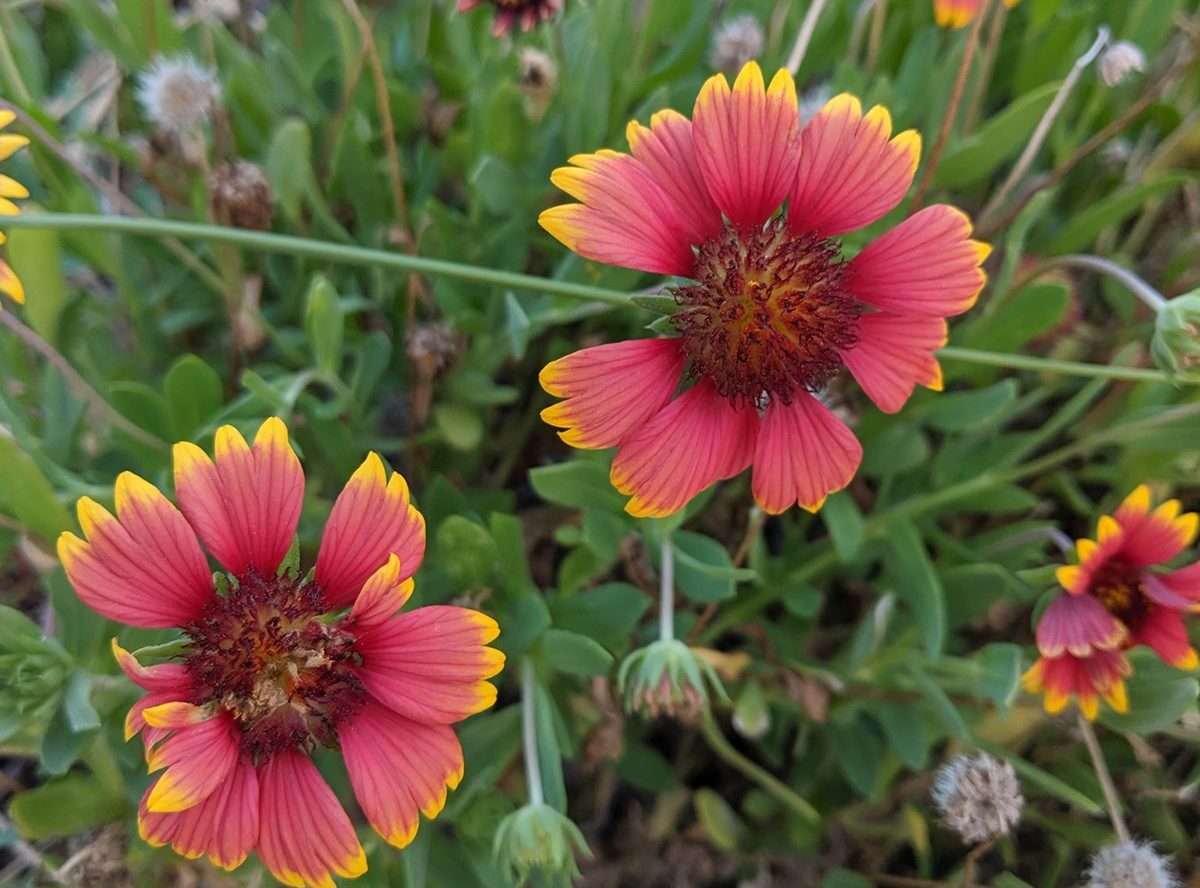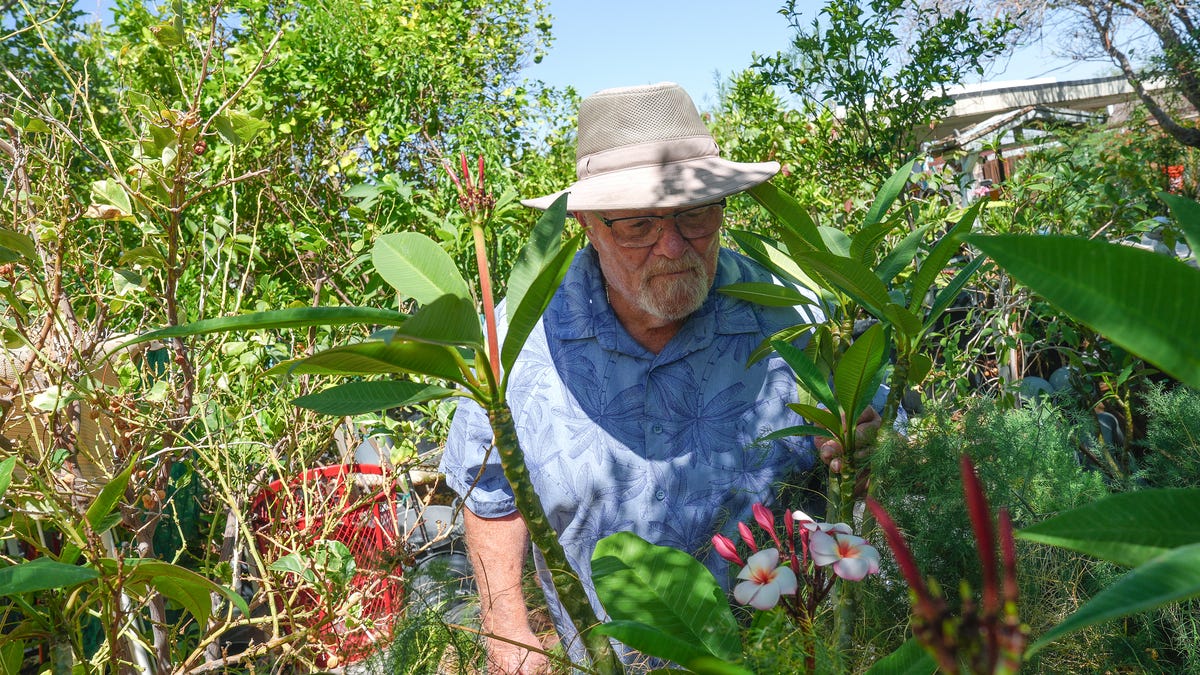Victoria Master Gardeners are committed to sharing information on everything related to gardening. Spring was in the air, when Patti Welder Middle School teacher John Hogan invited four master gardeners to meet with the Agriculture Club students, we eagerly accepted his invitation.
We met outside by the brand new greenhouse that was built by VISD. Over 50 types of vegetables were planted in the greenhouse. We Master Gardeners were there to briefly describe clothing to protect people; watering and weeding methods as well as composting and pollination in the garden. The students sat down at the bench tables and listened or got up and participated during the presentations.
Master Gardener Brynn Lee gave a demonstration on covering up from head to toe. The sun beating down requires that a gardener wear a wide brim hat to cover the entire head including ears and neck plus long sleeved shirt and pants that are loose fitting along with boots. Protective leather gloves when the gardener is picking up limbs and leaves where scorpions or snakes hide.
Master Gardener Barbara David gave a demonstration on watering and weeding. Outside plants should be watered two to three times a week. The water-hose should be aimed down by the ground to soak the roots fully. Preferably, plants should be watered in the morning. Watering in the evening makes the plants more susceptible to insects, fungus and/or disease.
Weeding each week is critical for plant health. It is important to pull out the whole weed including the roots. While weeding, be on the look-out for spider mites, fire ants, aphids, hornworms, striped cucumber beetles and many other pests. Using a magnifying glass and tweezers can be helpful for removing tiny pests.
Dump out stagnant rainwater because it is a breeding ground for mosquitoes. There are many bugs that are destructive in the garden but there are many that are constructive and natureâs helpers.
Master Gardener Kristine Oksenholt gave a presentation on the benefits of natureâs helpers which include composting bugs and pollinating bugs. When gardeners do composting it invites earthworms, white worms, sowbugs, pill bugs, millipedes, snails, slugs and mites to help breakdown the organic material in the compost pile.
Students received hand-outs which showed the difference between green compost (i.e. coffee grounds) and brown compost (i.e. cardboard) materials and were invited to come up and layer some of each type of material into a plastic tub.
Compost is a very nutrient rich addition to soil that helps plants grow. While the compost bugs are helping make compost for the plants, the pollinating insects such as bees, butterflies, moths, as well as animals such as birds, bats and other animals are working hard at pollinating fruit and vegetable crops.
Thirty five percent of the worldâs food crops depend on pollinators. A pollinator accidently moves along the flowers looking for food like nectar and pollen. They unknowingly deposit pollen from flower to flower. The plant uses the pollen to produce a fruit or seed.
Master Gardener Kathy Chilek gave a presentation on the status of bees. Posters and props were used to show startling information about the decline of the bee population. Albert Einstein said if the bee disappears from the earth, humanity would only have 4 years left.
A post-evaluation was collected which revealed that the students have concerns about the bees and a few would like to become farmers. Students were given packets of loofah seeds and informational pamphlets at the end of the presentation.
The students were asked to plant donated marigolds into the vegetable garden to deter pests. Mr. Hogan was given a hummingbird feeder to help with pollination. As we were leaving, it began to rain.
The Gardeners’ Dirt is written by members of the Victoria County Master Gardener Association, an educational outreach of Texas A&M AgriLife Extension – Victoria County. Mail your questions in care of the Advocate, P.O. Box 1518, Victoria, TX 77901; or [email protected], or comment on this column at VictoriaAdvocate.com.









